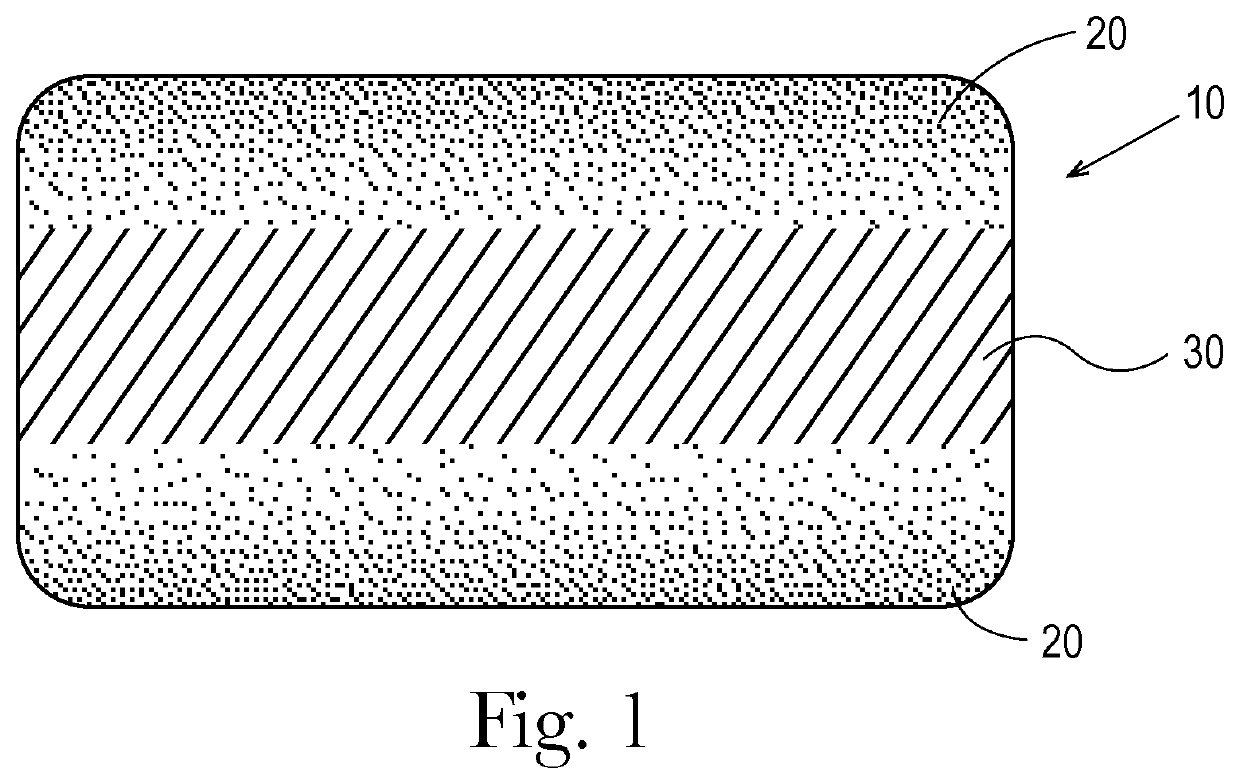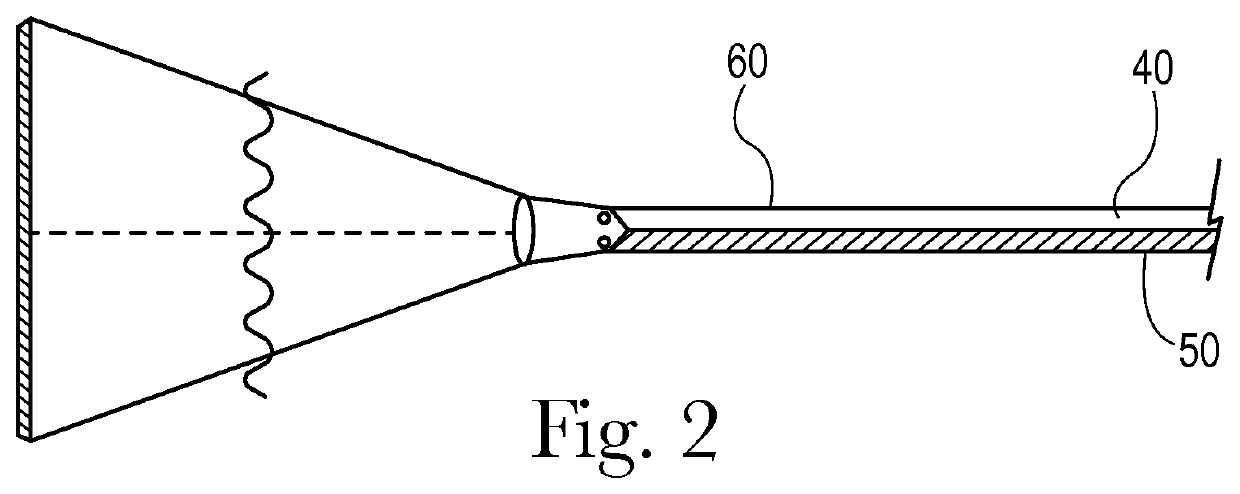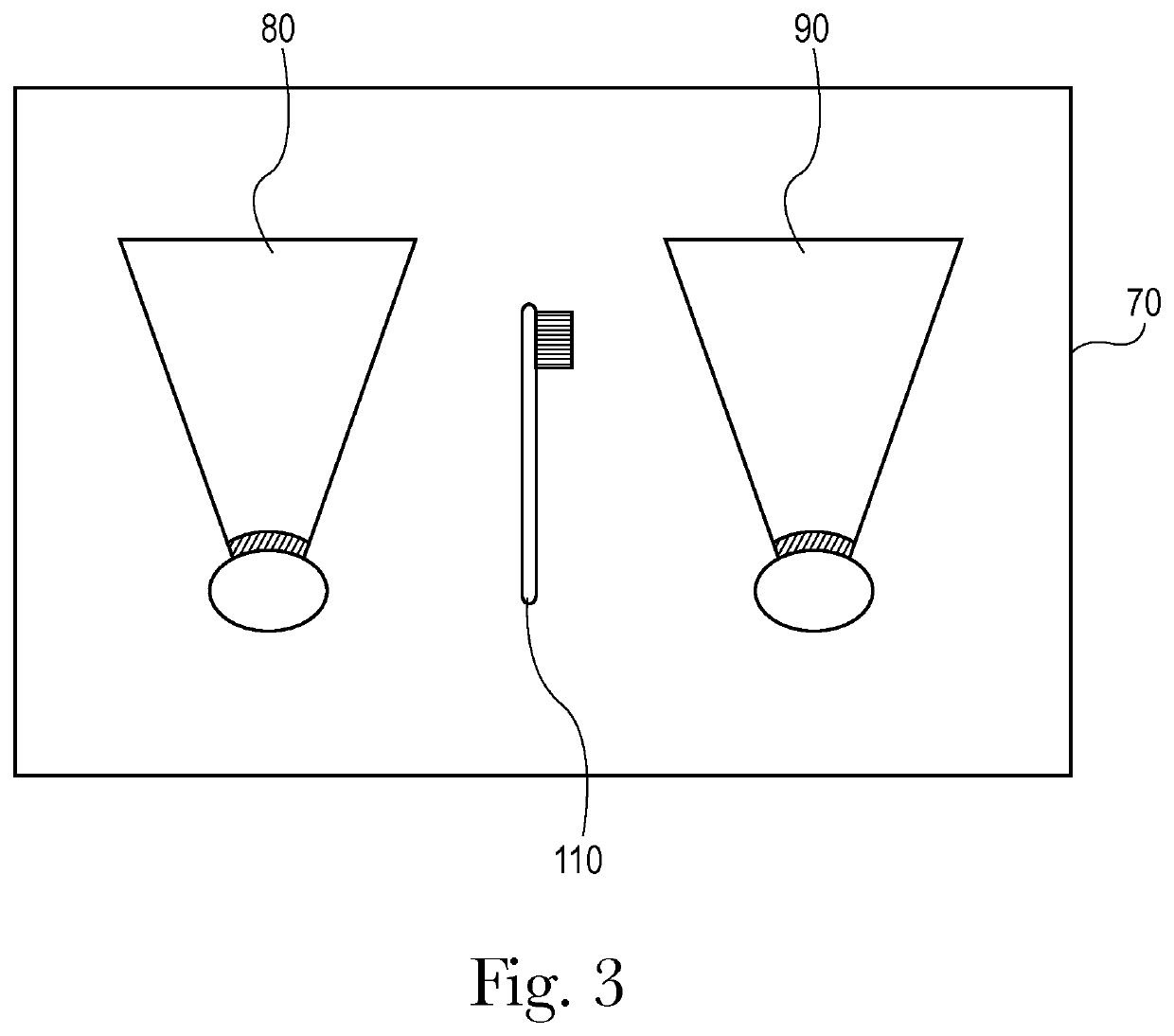Oral care compositions and regimens
a composition and oral care technology, applied in the field of two-step oral care compositions, can solve the problems of preventing users from seeing some of the intended benefits, insufficient user compliance with the two-step system, etc., and achieve the effect of encouraging compliance and lasting pleasant flavor
- Summary
- Abstract
- Description
- Claims
- Application Information
AI Technical Summary
Benefits of technology
Problems solved by technology
Method used
Image
Examples
example 1
[0070]
First CompositionStannous Fluoride, USP0.454Water2.600Glycerin, USP (99.7%)58.977Zinc Lactate Dihydrate (100%)2.500Sodium Phosphate Tribasic1.100DodecahydrateSodium Gluconate, USP0.652Sodium Hydroxide (50% solution)0.087Xanthan Gum, NF0.400Sodium Carboxymethylcellulose0.200(7M8SF)1Thickening Silica (Zeodent ® 165)21.500Silica (Zeodent ® 109)212.500Silica (Zeodent ® 119)212.500Sodium Lauryl Sulfate (28% solution),4.000Saccharin Sodium, USP (Granular),0.500Flavor1.030Colorants1.0001Available from Aqualon ® (Wilmington, Delaware, USA)2Available from the J. M. Huber Corporation (Edison, New Jersey, USA)
[0071]
Second CompositionHydrogen Peroxide (35%)8.700Glycerin, USP20.000Water65.400Sodium Acid Pyrophosphate1.000Carbopol ® 956 Polymer3 (CAS# is2.000134499-38-0)Sodium Hydroxide (50% solution)0.900Saccharin Sodium, USP (Granular)0.500Flavor1.000Sucralose, USP0.5003Available from the Goodrich Corporation (Akron, Ohio, USA)
[0072]A panel of 17 adults were provided the compositions of E...
example 2
Dentinal Flow Rate Measurement
[0075]Volumetric flow rates through cross-sections of human 3rd molar coronal dentin were measured before and after treatment using a flow cell apparatus (FIG. 5). Twenty two coronal dentin sections of human molars were obtained by cross sectional cutting with a diamond blade saw to a thickness between 0.80 and 1.00 mm. The sections resembled disks due to the circular nature of molars. The center of the disk is dentin with a thin ring of enamel around the circumference (FIG. 5). The cut dentin disks were then placed in 6.0% citric acid for two minutes followed by sonication in water and subsequent rinsing to remove the smear layer created by the cutting process. The removal of the smear layer with citric acid is an effective and well known technique to produce open dentinal tubules representative of sensitive dentin found in-vivo. Samples were then immersed in at least 10 ml of commercial phosphate (pH 7) buffer for storage at neutral pH until needed.
[0...
PUM
 Login to View More
Login to View More Abstract
Description
Claims
Application Information
 Login to View More
Login to View More - R&D
- Intellectual Property
- Life Sciences
- Materials
- Tech Scout
- Unparalleled Data Quality
- Higher Quality Content
- 60% Fewer Hallucinations
Browse by: Latest US Patents, China's latest patents, Technical Efficacy Thesaurus, Application Domain, Technology Topic, Popular Technical Reports.
© 2025 PatSnap. All rights reserved.Legal|Privacy policy|Modern Slavery Act Transparency Statement|Sitemap|About US| Contact US: help@patsnap.com



